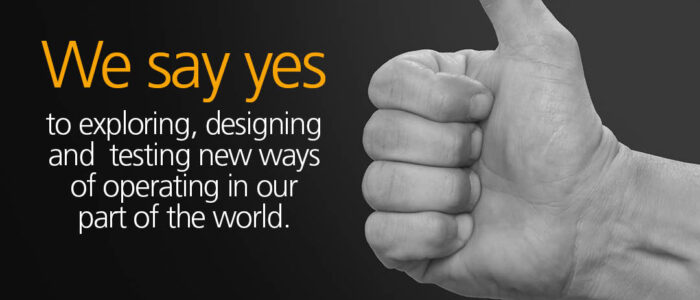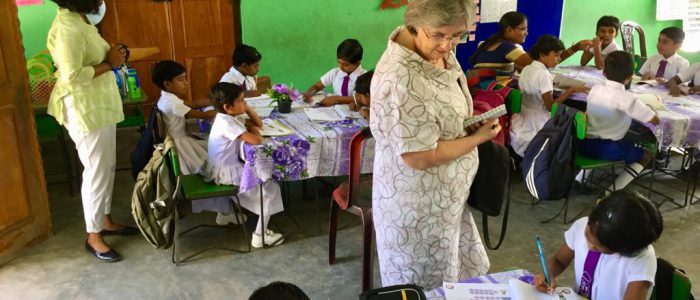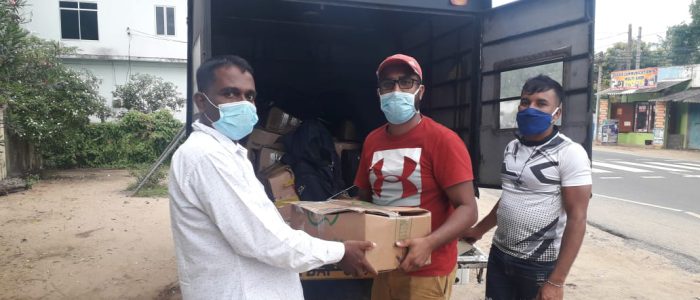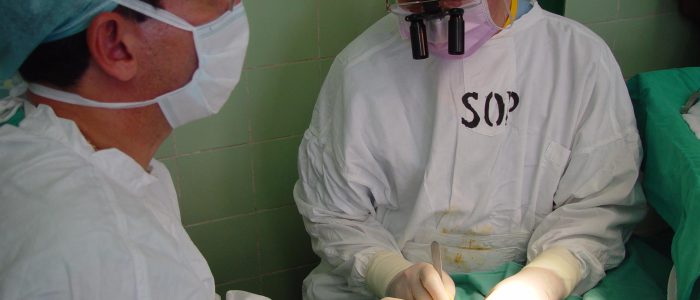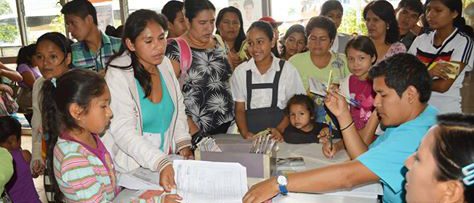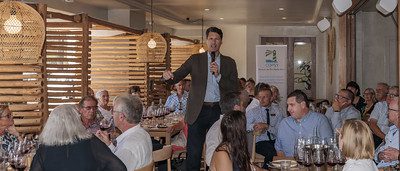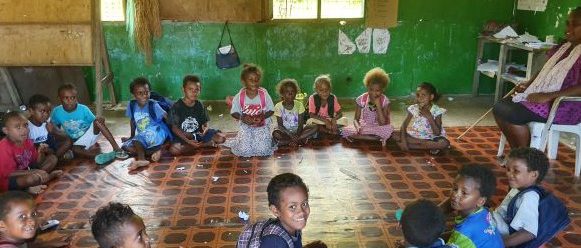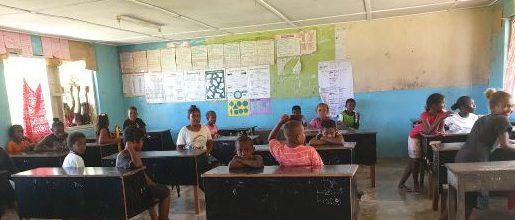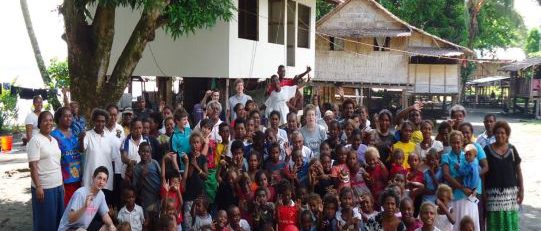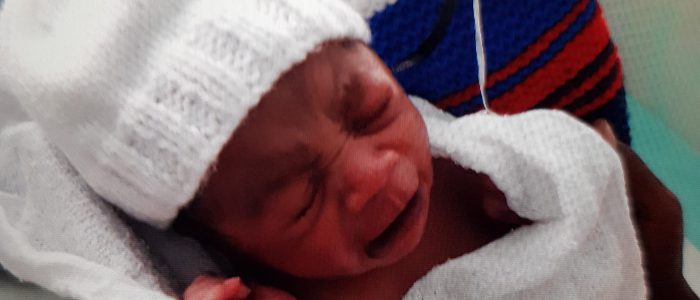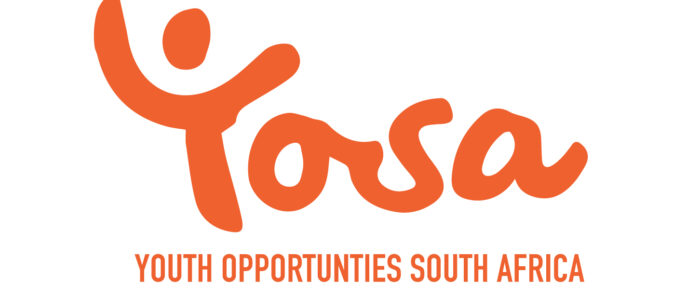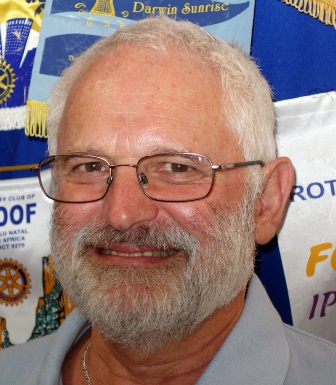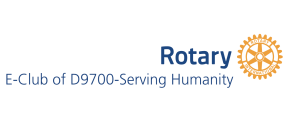REMINDER OF GOTOMEETING THIS NEXT WEDNESDAY-1st March at 7.30pm EASTERN DAYLIGHT TIME
You will receive an email today with the link to the meeting. Please attend if at all possible.
I am back home again after a great skiing holiday.
Below is an interesting post from a member of an E-Club in Western Australia that has a message for all Rotary Clubs I think.
How inclusive is your club?

By Kate McKenzie, Rotary E-Club of Western Australia
Recently, I came across the concept of “conscious inclusion” when reading an article about how a bank consulted with an NGO for people with vision impairment when designing their new credit/debit cards. I started thinking about whether Rotary clubs are practicing conscious inclusion.
Unconscious bias means that we are often not aware of the needs of others. We may be willing to adjust if someone asks, but we may not be proactive about thinking ahead, asking for advice and then communicating with people that we have considered their needs.
People used to raise children in their 20s so by the time they were in their 30s they were starting to have time to do other things. Now parents often welcome their first born when they are are in their 30s and juggling career with everything else. Volunteering with Rotary could be easier if children could be a part of it. Does your venue have highchairs and maybe a small box of toys/books? Does your website mention that children are welcome? Do you plan some activities in family-friendly places like parks?

The Rotary E-Club of Western Australia
When I became a mother, I was suddenly a lot more aware of street design, building entrances and corridor width. Pushing a pram around made me aware of the challenges that people using a wheelchair must face. Has your club conducted an accessibility audit of the venue(s) where you meet? Do you consider accessibility when planning social events? Perhaps you could engage a guest speaker to help learn what you need to consider? You may find that persons with disability are more likely to join your club if your website gives them key information relevant to their needs.
In my previous Rotary club, one of our members had impaired hearing. He was taught to lip read from a young age, so didn’t use sign language. It was important, however, that we allowed him to sit where he could easily see the guest speaker and that we made an effort to face him directly during conversation. Through asking him what he needed, we learned how to make his Rotary experience more fulfilling.
Finally, many Rotary clubs come together in the act of sharing food. It’s important, however that we consider medical, ethical and religious dietary needs, so that food doesn’t divide us. Does your venue serve vegetarian or vegan options? Can kosher, halal options be made available? Do you collect information about dietary requirements in advance? If a member or visitor is fasting, can they attend without feeling obligated to pay for a meal? Is the kitchen capable of serving food that is safe for people with allergies or other medical needs?
A little forethought can go a long way to making our clubs more welcoming of diversity in our communities. Diversity makes us stronger.
Hi All from San Francisco
We have arrived to stay with friends in San Francisco after a fabulous week at Heavenly Resort, Lake Tahoe. Back to Australia on Friday and will be attending the RAWCS quarterly meeting in Canberra this coming weekend.

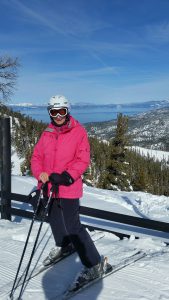
7 steps to increasing your club’s Facebook presence

Use a cover photo that really speaks to your club’s mission.
By Melissa Ward, Rotary Club of Twin Bridges, Southern Saratoga, New York, USA
A Facebook page gives your club a voice on Facebook. With so much other “noise” on social media, there are several things you can do to raise your club’s page above the distractions.
- Make good use of visuals. Your cover photo is prime real estate. Use a photo that really speaks to your club’s mission.Post fun, active photos.
- Post regularly. Share your club’s next program, a photo of a project, create an event for your next fundraiser. For example, post your speaker every Monday. Share a photo every Wednesday. Share an article from Rotary.org every Friday.
- Encourage club members to LIKE and SHARE posts from your Facebook Page. This is where the magic of social media kicks in. When members share posts onto their personal Facebook page, their connections can see it, like it and increase the club’s exposure exponentially. This is key to keeping your club’s posts in the newsfeed.
- Your Facebook page can become a source for donations. If your club’s page has been set up as a not for profit and is verified you may be able to collect donations. See Facebook’s rules. Once your club is approved, people who like your page can run fundraising campaigns on your organization’s behalf. Note: This is currently only for USA based club’s that are or have a foundation that is a registered 501(c)3.
- Tag other businesses and organizations you work with. Place the @ sign in front of the business name and their Facebook page should appear. Select it and it will be tagged in the post. That sends a notice to that business, and gives them the opportunity to share your post onto their page. Now you have even MORE exposure.
-

Add a milestone for your charter date and major events.
Have more than one person as a page admin. Our club page has 3 admins. Each of us is responsible for different aspects of the page. This prevents the page from being forgotten, or from getting lost.
- Use Milestones. Add a milestone for your charter date, for each president, for major events or awards. Milestones increase engagement AND give you a timeline of your club’s history.
The above tips may seem like a lot, but you can do them over time. The most impactful activity is having club members like and share your club’s posts. This helps your club increase its reach and gain awareness in the local community. Using free tools like Hootsuite and Canva will make managing your page easier and more efficient.
Rotary bringing the world to Atlanta in June
Bill Gates to keynote convention
ATLANTA, Ga. (Feb. 14, 2017) – Rotary’s 108th annual international convention June 10–14 is expected to attract 40,000 Rotary club members from over 160 countries, and will inject an estimated $52.3 million into Atlanta’s economy.
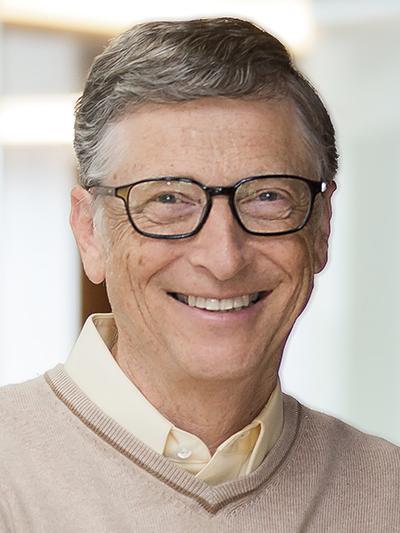
Registrants will engage in workshops and hear from a lineup of world-class speakers, including Bill Gates, co-chair, of the Bill & Melinda Gates Foundation. The Gates Foundation and Rotary International have an ongoing match of 2:1 to support polio eradication efforts up to $35 million a year. Today in Bill and Melinda Gates’ Annual Letter they reaffirmed the important role Rotary has played in polio eradication.
“Rotary and the Bill & Melinda Gates Foundation have been working together on polio eradication for a long time, and our strong partnership will continue through the final years of the effort,” said Rotary International President John Germ. “With the most effective resources in place, it’s possible that we will soon see the last case of polio in history. At the convention, Bill will say more about how we can — and will — end polio.”
Organized by Rotary International in conjunction with the Atlanta Host Organizing Committee of local Rotary members, registrants of the convention will also get to experience Atlanta’s southern charm with visits to the World of Coca-Cola, the College Football Hall of Fame and an Atlanta Braves game.
“The Rotary International Convention provides an exceptional opportunity to bring together more than 40,000 civic and business community leaders from throughout the world to Atlanta to enjoy our unique brand of southern hospitality,” said William Pate, president and CEO of the Atlanta Convention and Visitors Bureau. “The addition of Microsoft founder Bill Gates as a keynote speaker reflects the importance and good work that Rotary does worldwide.”
The global eradication of polio has been Rotary’s top priority since 1985. Through the Global Polio Eradication Initiative – a public-private partnership that includes Rotary, the Bill & Melinda Gates Foundation, the U.S. Centers for Disease Control and Prevention (CDC), the World Health Organization (WHO) and the United Nations Children’s Fund (UNICEF) – the incidence of polio has plummeted by more than 99.9 percent, from about 350,000 cases a year in 1988 to just 37 confirmed in 2016. Rotary, including matching funds from the Gates Foundation, has donated $1.6 billion to polio eradication.
Atlanta’s first Rotary convention took place 100 years ago, when The Rotary Foundation was established with its first contribution of $26.50. The Rotary Foundation’s assets have grown to approximately $1 billion, and more than $3 billion have been spent on projects and scholarships that promote peace, fight disease, provide clean water, support education, save mothers and children, and grow local economies.
About Rotary
Rotary brings together a global network of volunteers dedicated to tackling the world’s most pressing humanitarian challenges. Rotary connects 1.2 million members of more than 35,000 Rotary clubs in over 200 countries and geographical areas. Their work improves lives at both the local and international levels, from helping families in need in their own communities to working toward a polio-free world. To access broadcast quality video footage and still photos go to: The Newsmarket.
Greetings All from Jackson Hole, Wyoming, USA


This a a great ski mountain but we only got to ski one day (oh but what a powder day – locals were saying it was the best day for many years ) this week as a storm on Tuesday evening flattened 17 power poles that supply the resort. Hopefully we will be be able to fly out from the airport on Saturday morning onroute to our final week at Heavenly, Lake Tahoe, California.
Jackson Hole has three Rotary clubs. Unfortunately I could not attend any as two were over before I looked and one is on Sunday for lunch before we arrived.
Check out Rotary.org’s modern, new look
Rotary.org, our public-facing website, has a fresh, contemporary look that clearly answers the often-asked question: “What is Rotary?” It’s the first step in a two-part update to our entire website: first Rotary.org, and then My Rotary.
For many people, our website is their introduction to the great work that Rotary members do to improve lives around the world. It’s meant to create an emotional connection that inspires potential members, donors, and partners to get involved. The latest changes to the public site do that, and more.
Some of the updates will be obvious: a modern design, increased use of imagery and graphics to tell our stories, and better organization of content to help readers find out who we are and what we’re doing. Other changes, like the improved readability and speed of the site, will be a welcome surprise.
These upgrades are made possible partly by the dues increase the 2016 Council on Legislation passed to allow Rotary to provide additional support to clubs and districts. As part of our work to refresh My Rotary, we’ll also update Rotary Club Central and the Club and District Administration pages — more information about these improvements will arrive in the coming months.
Visit www.rotary.org to see all the enhancements to our public site.
Bringing about reconciliation
This is a fantastic project that has had support from D9600 and Australian Rotarians and the Rotary Foundation who fund the Peace Scholarship Program.

A community reconciliation event in the Solomon Islands.
By Nadia Mahmood, Rotary Peace Fellow, University of Queensland, Australia
Over the past two and a half months, I have been working with Prison Fellowship Solomon Islands (PF), a grassroots peace-building organization which runs conflict resolution, restorative justice,and reconciliation programs and provides support for families of inmates.
It is honestly hard to put into words how inspiring and engaging it is to work with this team of local volunteers who exemplify everything that Rotary stands for. During my time here, I have had the opportunity to travel to different provinces to be part of restorative justice training in the prisons and help inmates write letters of apology to their victims.

Rotary Peace Fellow Nadia Mahmood (front center) during her applied field experience.
The Prison Fellowship team delivers the letters to the victims’ families and mediates and counsels them to see if they are open to engaging in reconciliation. As part of this, I have been able to support the team in mediating reconciliations between individuals, communities, as well as between groups of former combatants and between ex-combatants and their own communities.
We organized a Christmas program at three locations that allowed incarcerated parents to reconnect with their families and give gifts to their children. We have also expanded our programs for a growing number of incarcerated youth and women in prison. I assisted the team in developing and delivering programs and support services to the wives of inmates. One highly successful pilot recently trained the wives in simple income generating techniques such as making snacks and jewelry items to sell at the market, and will now be rolled out on a larger scale.
During a visit to the Rotary Club of Honiara, I shared with them my experiences and explained the Rotary Peace Fellowship program. We are now working together to develop a promotion and recruitment strategy to increase the number of applications to both the certificate and masters programs from the Solomon Islands.
I will leave my field study having definitely received much more than I have given. The people I have met poured out their warmth, hospitality, and patience upon my in teaching me the language, culture, customs, and grassroots peace-building methodologies. I return to Brisbane on 14 February to complete my final semester, with the hopes of finding a way to return to the Solomon Islands after that.
I have also found time to have plenty of fun at the beach and have spent time in my friends’ villages in Savo Island and Lau Lagoon in Malaita.
I am thankful to all the Rotarians, especially my sponsoring Rotary Club of Charleswood, Winnipeg, Canada, and host Rotary Club of Brisbane Planetarium, Australia, for making this happen. I am also thankful for the amazing team of staff and professors at the University of Queensland for the excellent foundation and support they have provided me in preparing me for this experience. My entire Peace Fellow class has also blessed me with their friendship, support, and teamwork, and I look forward to reconnecting with them on my return.
Learn more about Rotary Peace Fellowships
Greetings all from VAnCouver, Canada
We have had a great week skiing at Sun Peaks, Canada. Carolyn and I have been attending a seminar for radiographers and radiation therapists, “Canada Imaging” as well as enjoying the skiing here. One of the other participants in the seminar, Nicole Oates is a member of the Rotary Club of Port Macquarie Sunrise, D9650. It is a small world in Rotary!!

View from Sun Peaks Base – Friday 4 February – SNOW!!
We have returned to stay last night with friends in Vancouver before travelling to Jackson Hole, Wyoming today.
POLIO PLUS CHALLENGE BY DG MICHAEL
I am not sure you are aware of DG Michael Milston’s challenge to all Clubs to support his hair growing efforts by raising funds for Polio Plus.
This is his message to us.
“Since opening the challenge, my hair proceeded to grow as has the fund. I reported that we were $3,200 into our $26K target. WELL, GUESS WHAT??
The fundraising is growing quicker than my hair – you have collectively contributed almost $10,500! that is over three times the starting level. And I know there are more than half the Clubs yet to contribute.
I thought you might like to see how ugly I’m getting – no you don’t have to agree so readily.”
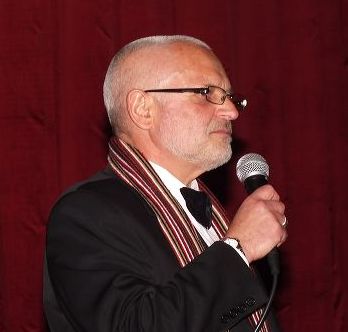

In the beginning Mid January Today
Please support DG Michael by donating to our Service Account.
EFT Payments please make out to:
Account Name: The Rotary E-Club of District 9700 – Service/Projects,
Reference – Name plus “Polio Plus”
BSB: 032769 Account: 697413
Cheque Payments by post make out to: Rotary E-Club of District 9700-Serving Humanity
Reference – “Polio Plus” and your name’, and mail to:
Treasurer,
Rotary E-Club of District 9700-Serving Humanity,
PO Box 5752,
WAGGA WAGGA, NSW 2650
GREETINGS FROM CANADA
We arrived safely in Vancouver on an extended Australia Day.
Thank you to those who attended the Gotomeeting last Wednesday. Secretary Debbie will be sending details of a new member application by Elizabeth Venz from Wagga Wagga to all members soon. It is great that we are starting to gain some new members and I encourage all to invite your acquaintances to join us.
Rotary to Support a polio free world
EVANSTON, Ill. (17 January 2017) —Rotary today announced $35 million in grants to support the global effort to end polio, bringing the humanitarian service organization’s contribution to $140 million since January 2016.
Nearly half of the funds Rotary announced today ($16.15 million) will support the emergency response campaigns in Nigeria and the Lake Chad Basin (Chad, northern Cameroon, southern Niger and Central African Republic). Four cases of polio were detected in Nigeria in 2016, which had previously not seen a case since July 2014.
With these cases, funding is needed to support rapid response plans in Nigeria and surrounding countries to stop the outbreak.
While significant strides have been made against the paralyzing disease, with just 35 cases reported in 2016, polio remains a threat in hard-to-reach and underserved areas, and conflict zones. To sustain this progress, and protect all children from polio, experts say $1.5 billion is needed.
In addition to supporting the response in the Lake Chad Basin region, funding has been allocated to support polio eradication efforts in Afghanistan ($7.15 million), Pakistan ($4.2 million), Somalia ($4.64 million), and South Sudan ($2.19 million). A final grant in the amount of $666,845 will support technical assistance in UNICEF’s West and Central Africa Regional Office.
Rotary has contributed more than $1.6 billion, including matching funds from the Bill and Melinda Gates Foundation, and countless volunteer hours since launching its polio immunization program, PolioPlus, in 1985. In 1988, Rotary became a spearheading partner in the Global Polio Eradication Initiative with the World Health Organization (WHO), UNICEF, U.S. Centers for Disease Control and Prevention, and was later joined by the Bill & Melinda Gates Foundation. Since the initiative launched, the incidence of polio has plummeted by more than 99.9 percent, from about 350,000 cases a year to 35 confirmed in 2016, and no cases in 2017.
About Rotary
Rotary brings together a global network of volunteer leaders dedicated to tackling the world’s most pressing humanitarian challenges. Rotary connects 1.2 million members of more than 35,000 Rotary clubs in over 200 countries and geographical areas. Their work improves lives at both the local and international levels, from helping families in need in their own communities to working toward a polio-free world. To access broadcast quality video footage and still photos go to: The Newsmarket.
REMINDER of GoToMeeting – Wednesday 25th January at 7.30pm Eastern Daylight Time.
The email with the link will be sent to all members.
2017-18 RI President Ian H.S. Riseley announces his presidential theme, Rotary: Making a Difference
Hyland
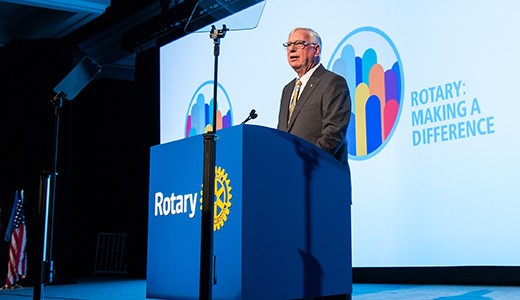
Rotary International President-elect Ian H.S. Riseley made the case on Monday that protecting the environment and curbing climate change are essential to Rotary’s goal of sustainable service.
Riseley, a member of the Rotary Club of Sandringham, Victoria, Australia, unveiled the 2017-18 presidential theme, Rotary: Making a Difference, to incoming district governors at Rotary’s International Assembly in San Diego, California, USA.
Environmental degradation and global climate change are serious threats to everyone, Riseley said. “They are having a disproportionate impact on those who are most vulnerable, those to whom Rotary has the greatest responsibility. Yet environmental issues rarely register on the Rotary agenda,” he said.
Find 2017-18 theme and logo materials
Follow the assembly on Facebook, Instagram, and Twitter using #rotary17
Environmental degradation is one of the major threats listed by the UN’s High-level Panel on Threats, Challenges, and Change.
Riseley added, “The time is long past when environmental sustainability can be dismissed as not Rotary’s concern. It is, and must be, everyone’s concern.”
The president-elect challenged every Rotary club to make a difference by planting a tree for each of its members between the start of the Rotary year on 1 July and Earth Day on 22 April 2018. Trees remove carbon dioxide and other greenhouse gases from the air, which slows global warming.
“It is my hope that the result of that effort will be far greater than the environmental benefit that those 1.2 million new trees will bring,” Riseley said. “I believe the greater result will be a Rotary that recognizes our responsibility not only to the people on our planet, but to the planet itself.”
Securing Rotary’s future
In his address to the 2017-18 class of district governors, Riseley also urged clubs to improve their gender balance and lower the average age of their members.
Only 22 percent of Rotary’s members are women, up from 13 percent 10 years ago. At that rate, Riseley said, it will take another three decades for Rotary to achieve gender parity.
We know that we can do more together than we could ever hope to do alone.
“Three decades is far too long to wait to achieve a Rotary that reflects the world in which we live. We need to make it a priority now,” he said.
Noting that 103 of the 539 incoming governors are women, Riseley said they are the type of women we need in Rotary, “leaders who will help Rotary connect with, and represent, and better serve, all of the members of all our communities.”
Riseley also believes it is imperative that clubs find ways to attract and engage younger members. Today only 5 percent of reported members are under 40, and a majority of members are over 60, Riseley told the audience.
“Consider what Rotary stands to look like 10 or 20 years from now if we don’t get very serious, very soon, about bringing in younger members,” Riseley said.
Clubs will make a difference this year through their own decisions, said Riseley, but it will take teamwork on a global scale to move Rotary forward and secure its future.
“We know that we can do more together than we could ever hope to do alone,” he told incoming governors. “I ask you to keep that spirit of teamwork and cooperation always in your minds and to take it back with you to your districts.”
Speeches
2017-18 Presidential Theme Address (RI President-elect Ian H.S. Riseley) (PDF)
Your Partners for Change and Strategy (RI General Secretary John Hewko) (PDF)
Strategic Planning and Empowerment (RI Strategic Planning Committee Chair Stephanie Urchick) (PDF)
Focus for the Year (Rotary Foundation Trustee Chair-elect Paul A. Netzel) (PDF)
REMinder GOTOMEETING
Wednesday 14th December at 7.30pm ESDT (NSW & VIC time) If you have not received an email with the link to the Special General Meeting please email me requesting one at : johnroberson@bigpond.com
This is Disease Prevention and Treatment Month
The Rotary Foundation helps make health care available for hundreds of orphans in Uganda.
Rotary’s top priority is the eradication of polio, but our members take on far greater responsibilities to fight disease. They set up health camps and training facilities in undeveloped countries and in communities struggling with HIV/AIDS and malaria. They also design and build the infrastructure for doctors, nurses, governments, and partners to reach the one in six people in the world who can’t afford to pay for health care.
Disease prevention and treatment takes on many forms, from supporting studies to helping immunize people to improving drinking water and the sanitation infrastructure. The world relies on Rotary to tackle these global challenges, and to set an example for others to follow.
Join Rotary and work on projects to prevent and treat disease.
Give now to support a polio-free world.
READ NEWS ABOUT ROTARY’S EFFORTS TO FIGHT DISEASE
- Polio vaccinators make significant headway in Nigeria
- Giving voice to those who might otherwise live in a silent world
- Drug wars, financial setbacks no match for Mexico clinic
- Family health days help 250,000 in Africa
RESOURCES & REFERENCE
- Learn more about our efforts to end polio
- Browse Rotary Showcase for member projects helping to fight disease
- Find a project to sponsor on Rotary Ideas
- Contact our manager for disease prevention and treatment
DID YOU KNOW
The roots of Rotary’s representative network actually predate the formal chartering of the UN after World War II. In 1942, Rotary clubs from 21 nations organized a conference in London attended by ministers of education to develop ideas for advancing education, science, and culture across nations. This meeting was the impetus for what is known today as UNESCO — the UN Educational, Scientific, and Cultural Organization.
Delegations of Rotary members helped draft the UN Charter in San Francisco in 1945 and gave the organization strong support during its early years, until the Cold War turned it into an ideological battleground. Rotary’s participation decreased over the following decades in keeping with its policy against political involvement.
The spark that restored Rotary’s interest in the UN was the launch of the campaign to eradicate polio in 1985, and the ensuing partnership with the World Health Organization and UNICEF.
“With the advent of PolioPlus [Rotary’s campaign against polio], it became very important to re-establish our presence,” says Jenkins.
In 1945, representatives of 50 countries met in San Francisco at the United Nations Conference on International Organization to draw up the United Nations Charter. Those delegates deliberated on the basis of proposals worked out by the representatives of China, the Soviet Union, the United Kingdom and the United States at Dumbarton Oaks, United States in August-October 1944. The Charter was signed on 26 June 1945 by the representatives of the 50 countries. Poland, which was not represented at the Conference, signed it later and became one of the original 51 Member States. The United Nations officially came into existence on 24 October 1945, when the Charter had been ratified by China, France, the Soviet Union, the United Kingdom, the United States and by a majority of other signatories. United Nations Day is celebrated on 24 October each year.
ROTARY-UN CELEBRATION MIXES BUSINESS WITH DIPLOMACY
Outside the United Nations building in midtown Manhattan stands an imposing sculpture of a man wielding a sword in one hand and raising a hammer with the other. It reflects a shared goal that Rotary and the United Nations celebrated at the organizations’ annual meeting on Saturday, 12 November: to use our strengths and tools to build a more peaceful and just world.
The theme of this year’s Rotary Day at the United Nations, “Responsible Business, Resilient Societies,” emphasizes Rotary’s role as a global network of business leaders using the tools of their trades to build stronger, more prosperous communities.
In his introductory remarks, Rotary International President John F. Germ drew the crowd’s attention to the statue, “Let Us Beat Our Swords Into Ploughshares,” as he set the tone for the day, which included breakout sessions and keynote addresses on aspects of responsible business, or the philosophy that for-profit enterprise can contribute to positive social and economic development.
“Here is where the UN and Rotary International are working side by side, equipping communities with the tools they need, and empowering them with the will to use those tools far and wide,” he said.
Per Saxegaard, founder and chairman of the Oslo-based Business for Peace Foundation, gave a keynote address on the complex relationship between business and broader society, marked by both tension and opportunity. Despite the perception that profit alone motivates enterprise, he says, commercial success and social progress are closely intertwined.
“Societal needs define markets,” he said. “I have met many entrepreneurs in my career, and they all have one thing in common: They see a problem, and they say ‘I can fix that, and I can do it cheaper and better.’ That is the engine of innovation in business. We need that energy to solve the problems at hand,” such as hunger or illiteracy. He pointed to the Sustainable Development Goals, the UN’s ambitious roadmap for eliminating poverty by 2030 and highlighted the opportunity for businesses to help achieve them.
Other speakers included UN Under Secretary-General and High Representative for Disarmament Affairs Kim Won-soo and UNICEF polio chief Reza Houssaini, who provided an update on the polio eradication campaign.
John Hewko, general secretary of Rotary International, introduced eight Rotary Responsible Business honorees, six individuals and two corporate partners whose inclusive business practices are bringing employment, mentoring, education, and innovation to their communities.
The individuals honored were:
- Juan Silva Beauperthuy, Rotary Club of Chacao, Venezuela: For 25 years, Beauperthuy has helped keep disadvantaged youths on the right track through Queremos Graduarnos, an education program focused on mentoring and skill development, with support from his engineering firm. Today, the program serves more than 700 students in 18 schools.
- Jean-Paul Faure, Rotary Club of Cagnes-Grimaldi, France: To encourage young professionals and provide promising new businesses with training and funding, Faure launched a business contest called Le Trophée du Rotary. Now in its seventh year, the program has drawn support from a major bank and has kept past participants involved as mentors.
- Suresh Goklaney, Rotary Club of Bombay, India: Goklaney, executive vice chair of a large manufacturer of UV water purification systems, has led efforts to provide clean water in rural villages and impoverished urban areas throughout India. The project has also established centers where local women can sell clean water to generate income.
- Annemarie Mostert, Rotary Club of Southern Africa, South Africa: Mostert formed Sesego Cares, a Johannesburg-based nonprofit, in 2005 to offer education and job training, and to teach entrepreneurship and leadership development to women and children. She also worked with TOMS Shoes to provide 1.3 million pairs of its shoes to the country’s poor.
- Stephanie Woollard, Rotary Club of Melbourne, Victoria, Australia: After meeting seven illiterate craftspeople during a visit to Nepal, Woollard founded Seven Women to help Nepalese women make products to sell abroad. The program, which has trained and employed more than 1,000 women in the past decade, also teaches basic bookkeeping and computer skills.
- Larry Wright, Rotary Club of Taylor, Michigan, USA: A master gardener, Wright started his landscaping business with a bank loan in the 1970s. In 2013, he led an effort to adapt a microfinance model that had succeeded abroad to offer microloans, business classes, and mentorship to entrepreneurs in Detroit.
The business partners honored were:
- Coca-Cola Pakistan has supported the Rotary Pakistan National PolioPlus Charitable Trust since 2010 to promote polio prevention and awareness, particularly through publicity and projects to provide clean water, in one of the few countries where polio remains endemic.
- Mercantil Banco Universal supports a project that has trained 6,000 students in 40 universities across Venezuela in social responsibility and leadership, with the goal of encouraging students to use their academic knowledge to respond to the challenges of underserved communities.
In the afternoon, Rotary member Devin Thorpe spoke about the intersection of profit and purpose. Infusing a corporate program with a sense of social purpose pays off, he says, because it breeds loyalty and satisfaction among both customers and employees.
“When a purpose program is profitable, there is no limit to the good that can come from it,” he said. “Corporations are made up of people. We in this room bear the responsibility to shape corporate behavior, it is up to each one of us.”
Watch video coverage of the event on UN Web TV.
Rotary news
Next GoTOMEETING – Wednesday 14th December
7.30pm NSW & VIC Time
At this meeting we need to elect a President Elect for 2018-19 and Nominee for 2019-20. We also need to adopt a slightly changed Constitution & Bylaws to conform NSW Incorporation law and with RI requirements.
This article below is a reminder to all who conduct overseas projects to consult and work with the community they are assisting. Some very sound advice.
It’s not “your” project

By Dr. Francis “Tusu” Tusubira, a member of the Rotary Club of Kampala-North, Uganda
How many times do we hear Rotary members say, “we have our project in Kireberebe Kisunkaana?”
Let us get one thing right when dealing with economic and community development. And I will call this lesson one: it is not YOUR project.
It is a community project that you are supporting. Along these lines, I thought sharing a few experiential lessons is not a bad idea.
Lesson two: A community where disease is a challenge will lose so much time being sick that they cannot focus usefully on any other initiative that will help them develop. You cannot address economic and community development if you have not addressed basic health.
Lesson three: A community that does not have clean water, and which does not understand the relationship between “dirty water” and disease will have resultant health challenges: diarrhea, eye diseases, cholera, etc. You might as well have a comprehensive Water, Health, and Sanitation component as part of your project.
Lesson four: We all know that illiteracy can be a major barrier, if not a full block, to any efforts related to development. This really means economic and community development must also look at the literacy and numeracy environment (along with the ability to interpret, create linkages, and apply what is read to personal empowerment and development).
Lesson five: Poverty is state of mind. If you do not address the mindset of those that have accepted poverty as their lot, all the rest is a waste of time. This is an intangible challenge and the solution must be in addressing the mind.
When the ground is fertile in terms of the elements above, enablers like skills development (chances are that these will relate to agriculture and other income generating opportunities in rural communities) can be introduced. Or all the elements can move simultaneously to create synergy. Microcredit, for example, is an enabler, not a solution. One realizes soon on in life (if one is lucky) that money is never a solution. Giving money to the poor does not make them rich: it makes them poor people with some transient cash.
What is clear is that in all the above, dedicated expertise will be required. So will partners with knowledge and experience in handling the different aspects. Cooperating organizations are now recognized as one of the key features of sustainable economic and community development. This does not mean Rotary members do nothing; they must also dig in and apply their skills. But being a Rotarian is not a full time job so we need a helping expert hand.
So you see, economic and community development is a totality approach, not a one-dimensional intervention. Which leads to one last lesson:
Lesson six: It is not the things we give to or put in communities that create sustainability. It is what the community does in response to what we do as Rotary members.
This is behavioral change. We are just catalysts, not part of the reaction. It is NOT our project. It is THEIR project. Lesson six is not so much a lesson, actually, as a truism.
Adapted with permission from the Rotary District 9211 bulletin, The Wave.
Annual General Meeting
Thank you to those who attended the Rotary E-club of District 9700-Serving Humanity AGM last Tuesday 15th November. The Minutes will be posted in the members section soon. The new Club Constitution and Bylaws will be adopted at the next meeting as they require amendment. The meeting decided that the current executive would remain in office for one more year as we are new to the concept of an E-club and need to develop the potential of our Club. We also need to attract more members to be a viable Club.
It was resolved to hold our Board Meetings by GoToMeeting on the first Wednesday each month at 7.30pm ESDT, however the next one will have to be the second week in December as I will be away on the first Wednesday.
Those elected for the 2017-18 year are: President 2017-18 John Roberson Vice President To be elected next meeting President Elect 2018-19 To be elected next meeting President Nominee 2019-20 To be elected next meeting Secretary Debbie Schache Treasurer Marilyn Roberts Directors: Admin Cameron McKern Foundation Ruth Barber Membership Malcolm Dunnett Public Relations Marilyn Roberts International Service Sharon Daishe Youth & Australian Service Lauren Slater Other member committee positions are: Membership Donna Vaughan International Service Kate Bowyer Youth & Australian Service Jemma Hayward
The positions for President Elect and Nominee must be filled by the end of December as Rotary International require the names for those positions by then. Please consider your commitment and let me know if you can see your way to accepting one of them. Our Club needs them filled to remain viable.
Remaining positions to be elected at Meeting, to be held Wednesday 14th December at 7.30pm NSW/VIC time.
Rotary Foundation named World’s Outstanding Foundation for 2016
The Association of Fundraising Professionals has recognized The Rotary Foundation with its annual Award for Outstanding Foundation.
The award honors organizations that show philanthropic commitment and leadership through financial support, innovation, encouragement of others, and involvement in public affairs. Some of the boldest names in American giving — Kellogg, Komen, and MacArthur, among others —are past honorees.
“We are honored to receive this recognition from the AFP, which gives us even more reason to celebrate during our Foundation’s centennial year,” says Rotary Foundation Trustee Chair Kalyan Banerjee. “The continued strong support of Rotary members will help us keep our promise of a polio-free world for all children and enable the Foundation to carry out its mission of advancing world understanding, goodwill, and peace. We look forward to another 100 years of Rotary members taking action to make communities better around the world.”
The announcement came on 15 November, known to industry professionals since the 1980s as National Philanthropy Day. The award will be presented in early 2017 at the AFP’s annual conference in San Francisco.
Rotary Foundation Trustee Chair-elect Paul Netzel is set to accept the award on Rotary’s behalf, and Eric Schmelling, director of fund development at Rotary, will speak at the conference. The event is expected to draw more than 3,400 senior-level fundraising professionals from 33 countries.
“While almost everyone is familiar with Rotary, not everyone may realize just how much of an impact Rotary and The Rotary Foundation have had on countless people and communities across the globe,” says Jason Lee, AFP president and CEO. “On behalf of the entire charitable sector and people around the world, all of us at AFP are honored to be able to recognize The Rotary Foundation as our 2016 Outstanding Foundation.”
AFP’s committee of judges cited Rotary’s comprehensive campaign to eradicate polio as a major driver of the selection. They also mentioned that Rotary applies a methodical, purposeful approach to support a wide variety of causes, from providing clean water to educating the next generation of peace professionals.
Rotary News
